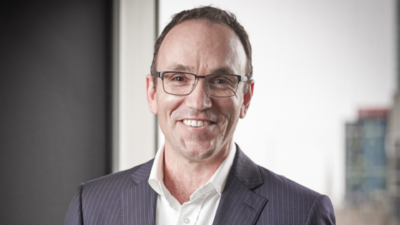Why Henderson likes the changing world
(Pictured:Matthew Beesley)
Investors who follow the rules can generally do a good job in steady markets. Super funds look likely to produce, in 2013, on average, their best calendar year returns for 10 years. But change is all around us. As the cliché goes: it’s the one constant.
Henderson Global Investors, a fund manager whose global equities team adopts ‘change’ as its mantra, just completed its second Australian roadshow this year. Matthew Beesley, Henderson’s head of global equity, said last week that a lot of investors were interested in “something different” from traditional global management.
“We see the world through different eyes and ideas,” he says. “We spend a lot of time looking for change, we scour the world looking for it, be it in countries, industries or stocks… We also spend a lot of time looking to see how companies interact in their markets. What we are looking for are misvalued companies.”
The manager, which recently announced the acquisition of the Australian hedge fund firm H3, is having a good year. Its global equities fund, run by Beesley, is more than 8 percentage points ahead of the index for the past 10 months, with 41.3 per cent versus ACWI’s 31.2 per cent and the MSCI World’s 34.0 per cent.
Beesley joined Henderson in April last year, from Trinity Street Asset Management in London, and says it took about seven months to get the portfolio into its current configuration and to reflect the way it is researched. Another unusual aspect of the style is that all stocks are equi-weighted at 3 per cent when they enter the portfolio. There are, therefore, between 30-40 stocks at any one time.
“Change is a continuous source of alpha,” he says. “Disruptive, indirect and internal change leads to disorder in equity valuations.”
Examples of change of interest the manager include:
- the launch of a truly innovative product
- a company looking to change the pricing structure of an industry
- change in a company’s or a whole industry’s cost base
- the arrival of a new management team into an underperforming, but structurally sound, business
- a drastic restructuring of a business.
An “eco-system analysis” is performed on a stock which may be of interest. This involves studying the sector for the company’s sustainability, including looking at suppliers and customers as well as competitors. The company’s debt levels are examined and compared with peers, including pension liabilities, and then the market’s valuation.
“For every stock we expect to have a very different view of the earnings and cashflow potential relative to the consensus view,” Beesley says.
Once a stock reaches Henderson’s view of fair value, or the investment case is otherwise undermined, it is exited completely. The target return from stock price movement is 50 per cent over two-three years.










